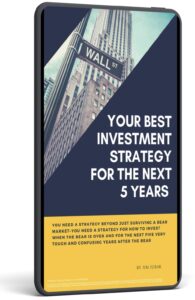
Long Term


Special Report: It is different this time–an intelligent investor’s guide to the next 5 years of Tough Decisions. Part 1 The Fundamentals
This past week, on Tuesday and Wednesday, September 17 and 18, the Federal Reserve injected $128 billion into the short-term money market in an effort to control a liquidity crunch that threatens the Fed's ability to set short-term interest rates. On Thursday, it put...
A deep dive into Exxon Mobil financials shows where even the big oil majors are vulnerable
To subscribe to JAM you need to fill in some details below including, ahem, some info on how you'll pay us. A subscription is $199 (although if you're subscribing with one of our special offers it will be lower) for a year for ongoing and continuing access to the...
Correction: I’m adding DuPont, my #3 Value Pick, to my 50 Stocks (not Dividend) Portfolio
Correction as of July 8. Dupont added to 50 Stocks rather than Dividend Portfolio I'd be willing to be dollars to donuts that U.S. stocks won't repeat their first half performance--up 17.4% on the Standard & Poor's 500--in the second half of the year. It's hard...
The importance of the 5% tariff that President Trump just slapped on Mexico is way bigger than the number suggests
It's only 5%, Wall Street is saying today in what clearly sounds like an effort to convince itself when investors really know better. That unconvincing "happy talk" is why the Standard & Poor's 500 index was down only 1.24% at the close today, May 31. (I say...
16 months on the S&P 500 with no gain–what’s it mean?
I have my theories about this--which I'll post tomorrow, Tuesday, May 28--and the facts certainly deserve an explanation. About 16 months ago on January 26, 2018 the Standard & Poor's 500 index closed at 2872.87. During the next 16 months, the markets would...Go how high would a carbon tax have to be to fight global warming?
It's interesting to me, as someone who works in a field (investing) where numbers are important much if the time and eventually have significance and consequences, that the big current argument against the Green New Deal is that it would cost too much. Let's ignore...
China’s stock markets re-open to dose of negative news
Welcome back! The Shanghai and other Chinese stock markets re-opened today after the Spring Festival/Lunar New Year holiday. And investors and traders were greeted with a dose of bad news. First, according to the official China Daily, China's economic growth rate will...
U.S. Treasury borrowing to double in 2018 to $1.34 trillion.
Amazing what important financial news can get pushed off the front page these days. On Monday the drop of even more U.S. indexes into correction territory and reports that the White House was teeing up new tariffs on another $250 billion in Chinese goods pushed truly...
U.S. Treasury sets borrowing record in first quarter–Treasury Secretary Steve Mnuchin–What me worry?
In the period from January through March, the U.S. Treasury borrowed $488 billion. That’s a record for the quarter and $47 billion more than the Treasury had earlier estimated. The Treasury finished March with a cash balance of $290 billion, up from an initial estimate of $210 billion.

This market indicator is signaling trouble ahead–in 2020 (Strange: That’s the same year the CBO estimates the annual U.S. budget deficit will hit $1 trillion.)
Earlier this evening I wrote about the unusual inversion in the VIX Fear Index which had futures for the CBOE S&P 500 Volatility Index (VIX) priced to show more risk in the near future than in the far future. Normally the price curve runs in the other direction since the near future is usually more predictable than the far future. Near future and far future are relative terms in the financial markets. In this case we aren’t talking about the difference between short-term 3 month Treasury bills and 10-year Treasury notes. The VIX curve stretches out from future contracts that expire in a couple of weeks to contracts that run for 40 days or more. But a market indicator that does focus on a longer time horizon is also indicating trouble ahead for 2019 or more likely 2020.

How to manage risk in this market when the traditional risk safe havens aren’t working
If you spend a significant part of your day staring at your computer to watch the markets, you know that, perplexingly, the traditional safe havens for mitigating portfolio risk haven’t been working very well. Now Goldman Sachs has put its computers and data crunchers to work and has reached the same conclusion as the anecdotal evidence suggested. Goldman has tagged this a period of “diversification desperation.”



